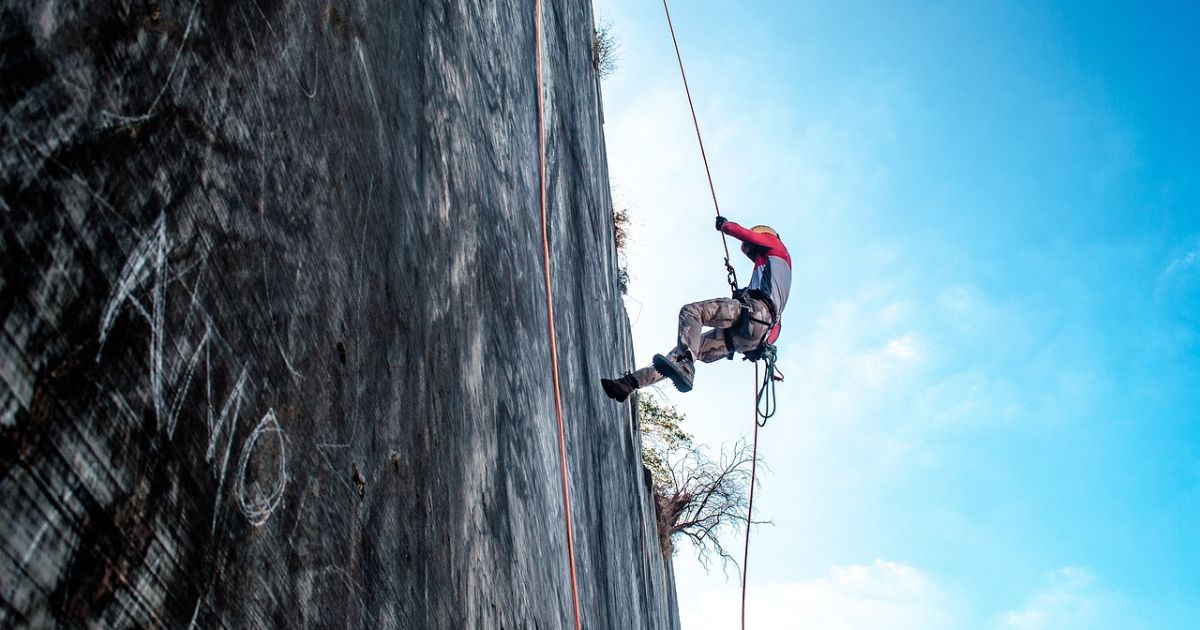Table of Contents
How to Rappel? Advanced Rappel Techniques (Descent Safety)
How to Rappel? It’s important to realize that climbers of all skill levels can experience rappel accidents. We’ll analyze the subtleties of typical rappelling mistakes in this in-depth guide, and we’ll also improve your safety precautions while climbing.
Exhilarating and demanding, rappelling necessitates close attention to detail and a solid understanding of safety procedures. To reduce the possibility of mishaps, climbers of all experience levels should regularly review and practice safe rappelling techniques.
The most frequent mistakes made when rappelling will be discussed in the sections that follow, along with useful advice on how to have a fun and safe experience on the cliffs.
The Most Common Rappelling Accident
1. The Peril and the Simple Solution
Falling off the ends of your rope is still the most common accident, accounting for 30% of all incidents each year. Tying a sturdy stopper knot at the end is the answer. But it’s crucial to address worries about knots snagging during coil throws.
2. Tangle-Free Techniques
Think about adding the idea of “saddlebags” to your rappelling toolkit to help lessen this. A precise coil throw is ensured by creating butterfly coils with progressively smaller diameters, reducing the possibility of snags. These methods simplify your descent while also securing your knots.
3. Dynamic Stopper Knots
Use dynamic stopper knots to add some flair to your knotting techniques. These knots adapt to the tension in the rope, offering extra security without sacrificing ease of release. Try out various knot variations to determine which one best meets your needs and improves efficiency and safety.
Anchor Failure: A Serious Threat
Strong anchor points are essential because anchor failure accounts for 25% of rappelling mishaps. Assuring the strength of your anchors is the main concern, but let’s also explore some other anchor-related insights.
1. Anchor Redundancy Techniques
Think about adding redundancy to your anchor configuration to improve it. To distribute the load evenly and reduce the chance of a single-point failure, use multiple anchor points. The extra safety precautions you take could significantly affect how dependable your anchors are.
2. Anchor Inspection Protocol
Make sure to periodically check your anchor points for damage. Establish a straightforward but efficient procedure that involves checking the anchors’ integrity before every descent. By averting possible breakdowns before they happen, this proactive strategy provides an additional degree of security.
Inadequate Rappel Backup
Rappel backup is so inadequate that it’s like rappelling down the rocks alone (20%). While we’ve talked about third-hand backup and the extended rappel device, let’s look at another approach.
1. Tether Configuration Innovations
Try a few different tether configurations. Investigate different tether lengths and attachment locations to determine a configuration that best suits your style of rappelling. This flexibility guarantees that your backup system will perfectly match your particular requirements.
2. Backup Communication Systems
Include backup communication systems in your routine when rappelling. Having clear communication with your climbing partner, using a whistle, hand signals, or a small two-way radio, adds an extra degree of safety. This guarantees coordinated descents and prompt reactions to unforeseen obstacles.
The Forgotten Tether: A Critical Component
Inadequate tethers, which cause 10-15% of rappelling accidents, pose a silent risk. Let’s examine tether-related issues in more detail.
1. Tether Load Distribution
Recognize how crucial it is to divide the load on your tether equally. To make sure that the force is applied to each component equally, maximize the length of your tether. This small tweak improves your rappel setup’s overall dependability.
2. Tether Attachment Innovations
Investigate cutting-edge tether attachment techniques. Vary your tether attachment methods by experimenting with different carabiner configurations and adjustable attachment points. This investigation guarantees that your tether will always be a flexible and reliable part of your rappelling apparatus.
In summary: Safe Descents Through Mastery
Developing advanced rappel skills calls for a diversified strategy. Climbers can drastically lower their chance of mishap by avoiding common pitfalls. Take responsible risks and welcome lifelong learning.
Climbers can continue to push their limits while reducing the risk of accidents by looking for seasoned mentors, keeping up with the most recent safety procedures, and regularly practicing new techniques.
More success and enjoyment in the realm of advanced rappelling can be attained by adopting an attitude of constant improvement and remaining modest in the face of difficulties.
Related Posts
- The 5 Fundamentals of Climbing You Need to Know
- 7 Techniques Every Climber Must Know
- Proper Climbing Warm-Up: For Better Climbing Performance
- The 7 Essential Movements of Bouldering
- Climbing Safety Tips: Protect Yourself While Rock Climbing
- Climbing Knots: A Complete Guide for Beginners
- A Complete Guide to Building Rock-Climbing Anchors
- The Best Places and Tips To Find Climbing Partners










Discussion about this post